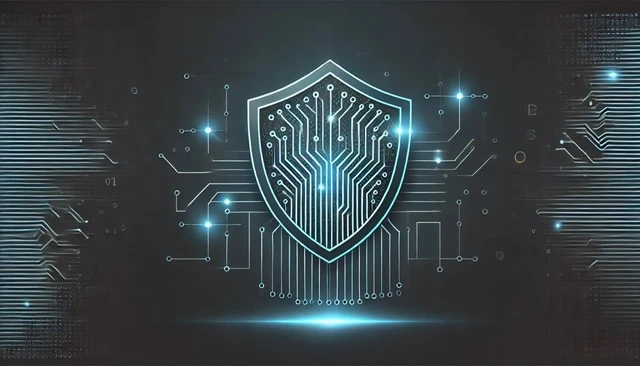In an increasingly connected world, cybersecurity is no longer optional—it’s a critical necessity. With cyber threats growing in sophistication and frequency, groundbreaking advancements in digital protection are emerging to shield our data, infrastructure, and privacy. In this comprehensive guide, we unveil the top 10 cybersecurity breakthroughs that are set to redefine digital protection and secure our future.
From cutting-edge encryption methods to AI-driven threat detection and zero trust architectures, these innovations promise to transform the cybersecurity landscape in ways we never imagined. Whether you’re a cybersecurity professional, a business leader, or a curious individual wanting to understand the future of digital protection, read on to explore these revolutionary breakthroughs and learn how they will impact our world in the coming years.
1. Artificial Intelligence-Powered Threat Detection
Artificial Intelligence (AI) has become a cornerstone of modern cybersecurity. AI-powered systems can analyze vast amounts of data in real time, identifying patterns and detecting anomalies that human analysts might miss.
Key Innovations:
- Real-Time Anomaly Detection: Advanced machine learning algorithms can monitor network traffic and user behavior to spot irregular activities that signal potential breaches.
- Automated Incident Response: AI systems not only detect threats but can also respond automatically by isolating affected systems, mitigating damage before it escalates.
- Predictive Analysis: By leveraging historical data, AI can forecast emerging threats, allowing organizations to take proactive measures.
For more on AI in cybersecurity, explore IBM Security Intelligence.
2. Zero Trust Architecture
The traditional “castle-and-moat” approach to security is rapidly becoming obsolete. Enter Zero Trust Architecture, a security model that operates on the principle of “never trust, always verify.”
Key Innovations:
- Continuous Authentication: Instead of a one-time verification, zero trust systems continuously validate user identities and device security throughout a session.
- Micro-Segmentation: Networks are divided into small, isolated segments, so even if one segment is breached, the attacker cannot easily move laterally.
- Least Privilege Access: Users and devices are granted only the minimum access necessary to perform their tasks, reducing the risk of data exposure.
Learn more about zero trust principles at Forrester Research.
3. Advanced Encryption Techniques
Encryption remains a fundamental pillar of cybersecurity. With emerging threats, traditional encryption methods are evolving into more advanced, resilient techniques that protect data even if it falls into the wrong hands.
Key Innovations:
- Quantum-Resistant Encryption: As quantum computing evolves, so does the need for encryption that can withstand its immense computational power. New algorithms are being developed to secure data against quantum attacks.
- Homomorphic Encryption: This breakthrough allows computations to be performed on encrypted data without needing to decrypt it first, ensuring data privacy during processing.
- End-to-End Encryption Enhancements: Modern communication platforms are implementing more robust encryption protocols to secure data from point-to-point, making interception nearly impossible.
For further reading on encryption, visit National Institute of Standards and Technology (NIST).

Read Also: Altcoin Mining – A Comprehensive Guide to Profitable Cryptocurrency Mining
4. Blockchain for Cybersecurity
Blockchain technology, known primarily for its role in cryptocurrencies, is finding new applications in cybersecurity. Its decentralized nature and immutable ledger make it a promising tool for securing digital transactions and data.
Key Innovations:
- Decentralized Identity Management: Blockchain can securely manage identities without relying on a central authority, reducing the risk of identity theft.
- Secure Data Sharing: The transparent and tamper-proof nature of blockchain enables secure data sharing between organizations, fostering trust and collaboration.
- Fraud Prevention: Blockchain’s immutable records can help detect and prevent fraud in financial transactions, supply chain management, and more.
Learn more about blockchain’s role in cybersecurity at IBM Blockchain.
5. AI-Driven Behavioral Analytics
Understanding user behavior is key to detecting insider threats and anomalous activities. AI-driven behavioral analytics systems monitor patterns in user activity, enabling organizations to detect deviations that may indicate malicious intent.
Key Innovations:
- User and Entity Behavior Analytics (UEBA): These systems analyze normal behavior and flag unusual actions, such as accessing sensitive data at odd hours.
- Insider Threat Detection: By monitoring how employees interact with data, AI can identify potential insider threats before they result in significant breaches.
- Continuous Learning: As these systems gather more data, they refine their algorithms, improving their accuracy in distinguishing between normal and suspicious behavior.
For more on behavioral analytics in cybersecurity, check out SAS Analytics.
6. IoT Security Enhancements
The proliferation of Internet of Things (IoT) devices has brought convenience and connectivity to new heights, but it also introduced a multitude of security challenges. With billions of interconnected devices, ensuring the security of IoT ecosystems is critical.
Key Innovations:
- IoT Device Authentication: Advanced methods for authenticating IoT devices ensure that only trusted devices can connect to networks.
- Edge Computing Security: By processing data closer to where it is generated, edge computing reduces latency and exposure, enhancing overall security.
- Automated Patch Management: IoT devices can be updated automatically with security patches, minimizing vulnerabilities caused by outdated software.
Learn more about IoT security at Cisco’s IoT Security Solutions.
7. Cloud Security and Microservices Architecture
As more businesses move their operations to the cloud, securing these environments has become paramount. Cloud security is evolving with innovations that protect data, applications, and infrastructure from cyber threats.
Key Innovations:
- Microservices Architecture: Breaking down applications into smaller, independent services enhances security by isolating potential breaches.
- Container Security: Securing containers, which are lightweight units of software, ensures that applications running in the cloud are protected from vulnerabilities.
- Automated Security Monitoring: AI-powered tools continuously monitor cloud environments, identifying and mitigating threats in real time.
For further details on cloud security, visit Microsoft Azure Security.
8. Next-Generation Firewalls and Intrusion Detection Systems
Traditional firewalls and intrusion detection systems (IDS) are being enhanced with AI and machine learning capabilities, making them more adaptive and effective against sophisticated cyberattacks.
Key Innovations:
- Behavior-Based Detection: Modern firewalls analyze network behavior to identify threats that traditional signature-based methods might miss.
- Automated Response: When a threat is detected, next-generation systems can automatically take action—such as isolating affected devices—to contain the breach.
- Integration with SIEM Systems: Security Information and Event Management (SIEM) systems collect and analyze data from multiple sources, enabling a holistic view of network security and faster response times.
Learn more about these systems at Palo Alto Networks.
9. Biometric and Multi-Factor Authentication (MFA) Technologies
Ensuring that only authorized individuals have access to systems and data is critical in today’s digital world. Biometric authentication and MFA are evolving to provide stronger, more user-friendly security measures.
Key Innovations:
- Advanced Biometrics: New biometric systems use facial recognition, fingerprint scanning, and iris recognition with increased accuracy and speed.
- Behavioral Biometrics: In addition to physical characteristics, behavioral biometrics analyze patterns like typing speed and mouse movements to authenticate users.
- Seamless MFA Integration: MFA is becoming more intuitive, combining biometrics with token-based systems and one-time passwords for robust protection without complicating the user experience.
For more on the evolution of biometric authentication, check out TechRadar’s security section.
10. Quantum-Resistant Cryptography
As quantum computing looms on the horizon, existing cryptographic methods are under threat. Quantum-resistant cryptography is being developed to secure data against the immense processing power of quantum computers.
Key Innovations:
- Post-Quantum Algorithms: New cryptographic algorithms are being designed to resist quantum attacks, ensuring data remains secure even when quantum computing becomes mainstream.
- Hybrid Cryptography: Combining classical and quantum-resistant methods offers a transitional solution that can protect sensitive information while quantum technologies mature.
- Standardization Efforts: Organizations such as NIST are actively working to standardize quantum-resistant cryptographic protocols to ensure global security.
For further reading on quantum-resistant cryptography, visit NIST’s Cryptographic Standards.

Integrating These Cybersecurity Breakthroughs Into Your Digital Life
As cybersecurity becomes increasingly critical in our digital era, understanding and adopting these breakthroughs can help safeguard your personal and professional data. Here are some strategies to integrate these innovations into your daily life:
Embrace Continuous Learning
The cybersecurity landscape is dynamic, with new threats and technologies emerging constantly. Stay informed by following reputable cybersecurity blogs, attending webinars, and taking courses on platforms like Coursera and Udemy.
Invest in Future-Proof Security Solutions
For businesses, it’s crucial to invest in security technologies that can adapt to future challenges. Evaluate your current cybersecurity framework and consider integrating AI-powered tools, advanced encryption, and zero trust architectures to enhance your defenses.
Prioritize Data Privacy and Ethical Practices
As you adopt new cybersecurity measures, ensure that they align with ethical standards and protect user privacy. Stay updated with guidelines from organizations like NIST and OWASP to implement best practices.
Leverage External Resources
To further explore the topics discussed, check out the following resources:
- MIT Technology Review – Cybersecurity
- Wired – Security
- Krebs on Security for in-depth investigations and analysis on cybersecurity threats.
Conclusion
The future of digital protection is evolving at an astonishing pace. The top 10 cybersecurity breakthroughs we’ve discussed—from AI-powered threat detection and zero trust architectures to quantum-resistant cryptography and next-generation firewalls—represent a significant leap forward in our ability to secure our digital lives. As cyber threats continue to grow in sophistication, these innovations provide robust, adaptive, and forward-thinking solutions to safeguard our data, privacy, and infrastructure.
In 2025 and beyond, the integration of these cutting-edge technologies will redefine how businesses operate, how governments protect their citizens, and how individuals interact with the digital world. The advancements in AI, blockchain, IoT security, and quantum computing are not merely incremental improvements—they are revolutionary changes that will shape the future of cybersecurity.
Embracing these innovations means staying informed, investing in continuous learning, and being proactive about implementing future-proof security measures. Whether you’re a cybersecurity professional, a business leader, or simply someone concerned about data privacy, understanding these breakthroughs is crucial to navigating the complex digital landscape of the future.
As you prepare for a world where cyber threats are more sophisticated than ever, remember that the power to protect your digital life lies in your ability to adapt and innovate. The revolution in cybersecurity is here, and it’s unstoppable. Equip yourself with knowledge, embrace the new technologies, and ensure that you are ready to face the challenges of tomorrow with confidence and resilience.
Welcome to the future of digital protection—where every breakthrough is a step towards a safer, more secure world. Stay vigilant, stay informed, and let these revolutionary cybersecurity innovations guide you to a future where your digital life is protected by the most advanced technologies known to man.
The digital landscape is changing, and with these top 10 breakthroughs, the future of cybersecurity looks brighter and more promising than ever. The time to act is now—prepare, adapt, and secure your world for a future where technology and security go hand in hand.